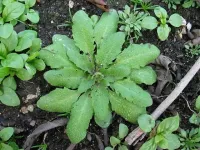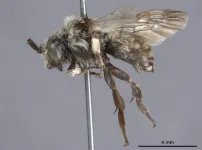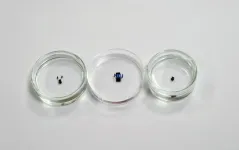Receptor location plays a key role in their function
2021-06-15
(Press-News.org) In the heart there are two different subtypes of beta-adrenergic receptors - beta1 and beta2 - which are activated by the stress hormones adrenaline and noradrenaline. They both trigger the strongest stimulation of the heart rate and pumping capacity that we know of. The two subtypes are highly similar biochemically, but differ substantially in terms of their functional and therapeutic relevance.
Both receptor types can stimulate the heart in the short term, yet when the beta1 receptor is activated over a prolonged period of time, it has a range of effects that are not seen with beta2. Beta1 can elicit a number of persistent changes and is endowed with the ability to initiate - oftentimes detrimental - growth of the heart muscle cells by activating various genes.
Recent studies by researchers at the Universities of Würzburg and Erlangen, the Max Delbrück Center for Molecular Medicine in the Helmholtz Association (MDC) in Berlin, and the ISAR Bioscience Institute in Munich-Planegg have now shed light on the mechanisms behind these different effects. The research teams have published the results of their work in the current issue of the journal Proceedings of the National Academy of Sciences of the USA.
Special ligands and new microscopy methods
"Using a fluorescent ligand synthesized at the University of Erlangen and novel highly sensitive microscopy methods, we were able to show for the first time where these receptors are located on heart muscle cells," explains Professor Martin Lohse of the Institute of Pharmacology and Toxicology at the Julius Maximilians University of Würzburg (JMU). He is co-lead author of the study along with Dr. Paolo Annibale, who is acting head of the MDC's Receptor Signaling Lab. "The endogenous receptors are expressed at relatively low levels," explains Annibale. "To detect their movement, it was necessary to use a form of spectroscopy based on the analysis of the signal's minute fluorescence fluctuations."
This revealed that beta1 receptors are found on the entire surface of heart muscle cells, while beta2 receptors are exclusively found in specific structures in these cells called T-tubules. Through invaginations of the cell surface, these tubules create a pipe-like network that runs through the entire interior of heart muscle cells. "One of the research focuses of our team at the MDC is the relationship between receptor function and subcellular localization," adds Annibale. "So the biophysical environment of T-tubules, which have curved membranes, is of particular interest to us."
Not all heart muscle cells have beta1 receptors
"The specific cellular location of beta2 receptors explains why they have a much narrower range of functionality than beta1 receptors and why they are limited to direct and short-term stimulation of the heart," explains Lohse. Such stimulation is mediated by signals that are locally restricted to the cell membrane. In contrast, gene activation and cell growth stimulation occur via more far-reaching signals that can only be triggered at the cell surface, where only beta1 receptors are located.
Another surprising finding of the study is that not all heart muscle cells have these receptors. "There are apparently different types or states of heart muscle cells, so not all cells respond to adrenaline," Lohse said. Until now, it was assumed that heart muscle cells in the large chambers were all the same.
New target for heart failure therapy
It has been known for many years that in chronic heart failure, too much adrenaline and noradrenaline circulate in the bloodstream and stimulate the heart to such an extent that it causes changes in the heart and its cells to grow. This initially compensates for heart failure, but in the long run the excessive growth damages the heart. Therefore, based in part on earlier findings by the Würzburg team, blocking beta receptors has become the accepted therapy for chronic heart failure.
The new findings now show why beta1 receptors play a much greater role in producing these adverse effects than beta2 receptors. Beta1 receptors are localized on the entire cell surface, enabling them to have a more diverse impact than beta2 receptors. The new knowledge about the differential localization and distinct functional effects of beta1 and beta2 receptors in the heart could possibly be exploited to develop better therapies for chronic heart failure. These would selectively inhibit the harmful effects of beta receptors (such as heart muscle cell growth), while at the same time activating the beneficial effects (such as stimulation of heart function).
INFORMATION:
[Attachments] See images for this press release:

ELSE PRESS RELEASES FROM THIS DATE:
2021-06-15
DUBLIN, June 15, 2021 - Scientists have identified how and why some Covid-19 patients can develop life-threatening clots, which could lead to targeted therapies that prevent this from happening.
The work, led by researchers from RCSI University of Medicine and Health Sciences, is published in the END ...
2021-06-15
A new antibody testing study examining samples originally collected through the National Institutes of Health's All of Us Research Program found evidence of SARS-CoV-2 infections in five states earlier than had initially been reported. These findings were published in the journal Clinical Infectious Diseases. The results expand on findings from a Centers for Disease Control and Prevention study that suggested SARS-CoV-2, the virus that causes COVID-19, was present in the U.S. as far back as December 2019.
In the All of Us study, researchers analyzed more than 24,000 stored blood samples contributed ...
2021-06-15
Chemotherapy kills tumour cells by causing damage to them. One of the most effective ways of causing damage is to prevent the two DNA strands from separating so that the cellular machinery cannot read the instructions written in the genes. But sometimes, the cell manages to repair the damage and survive, evading the effect of chemotherapy. CNIO researchers have found out how the cell does that and plan to use this knowledge to enhance cancer treatments.
The key lies in a peculiar protein called PrimPol, as explained in a publication in The EMBO Journal by the CNIO's DNA Replication Group, led by Juan Méndez.
The DNA molecule harbours the genes that direct the life of the cell and, ...
2021-06-15
The University of Ottawa has been awarded four new Canada Research Chairs (CRC) that will strengthen its expertise in artificial intelligence, health and law. The University is also proud to announce the renewal of two CRCs that will conduct leading-edge research in quantum communications and photonics.
"The Canada Research Chairs Program provides invaluable support to our researchers as they forge their paths of discovery at a world-class level," said Sylvain Charbonneau, vice-president, research. "The results of this most recent competition will ...
2021-06-15
A review of more than 9,000 U.S. patients with severe COVID-19 infection showed less than 1% contracted the illness again, with an average reinfection time of 3.5 months after an initial positive test. Those are the findings from a study conducted by researchers from the University of Missouri School of Medicine and MU Health Care.
The researchers teamed up with the MU Institute for Data Science and Informatics and the Tiger Institute for Health Innovation to review data from 62 U.S. health care facilities. They found 63 of the 9,119 patients (0.7%) with severe COVID-19 infection contracted the virus a second time, with a mean reinfection period of 116 days. Of the 63 who were reinfected, two (3.2%) died. Patients categorized as ...
2021-06-15
Plants evolve specialised defence chemicals through the combined effects of genes, geography, demography and environmental conditions, a study published today in eLife reports.
The findings reveal a pattern in the types of defence chemicals plants produce across Europe, and describe some of the evolutionary processes that create them.
As plants are immobile organisms, they rely on producing defence chemicals called specialised metabolites for survival. Specialised metabolites have extensive variation in their structure, such as the number of carbon molecules ...
2021-06-15
June 15, 2021 - Canadian researchers have discovered that a bee thought to be one of the rarest in the world, as the only representative of its genus, is no more than an unusual specimen of a widespread species.
Scientists with the Canadian Museum of Nature (CMN) and York University have reclassified the mystery bee, collected somewhere in Nevada in the 1870s, as Brachymelecta californica. They note that it's an aberrant individual of a species, the California digger-cuckoo bee, that is part of a group that includes five other species. All are cleptoparasitic bees, with females that lay eggs in the nests of digger bees. Brachymelecta californica itself is known to be widespread ...
2021-06-15
A recent UCLA clinical trial has shown encouraging results in helping daily smokers who are also heavy drinkers quit smoking and cut down their alcohol intake.
The study of 165 people tested two prescription drugs -- varenicline, for smoking addiction, and naltrexone, which is used to treat alcoholism. Studies have shown that varenicline, marketed under the brand name Chantix, may also be effective in reducing alcohol consumption.
Participants, who ranged in age from 21 to 65, smoked at least five cigarettes a day, with male participants generally consuming more than 14 drinks a week and women more than seven per week.
Over the 12-week study period, each participant received 2 milligrams of varenicline twice a day. Roughly half the group -- 83 participants -- also received a 50-milligram ...
2021-06-15
Hippopotamus aren't the first thing that come to mind when considering epidemiology and disease ecology. And yet these amphibious megafauna offered UC Santa Barbara ecologist Keenan Stears(link is external) a window into the progression of an anthrax outbreak that struck Ruaha National Park, Tanzania, in the dry season of 2017.
Through surveys and GPS monitoring, Stears and his colleagues, Wendy Turner, Doug McCauley and Melissa Schmitt, revealed that reduced dry-season flows in the Great Ruaha River indirectly spread the disease by affecting hippo movement. The results, which appear in the journal Ecosphere(link is external), present a unique perspective on disease ecology and illustrate how anthropogenic changes can impact wildlife and human health.
The ...
2021-06-15
A team of scientists at Nanyang Technological University, Singapore (NTU Singapore) has developed millimetre-sized robots that can be controlled using magnetic fields to perform highly manoeuvrable and dexterous manipulations. This could pave the way to possible future applications in biomedicine and manufacturing.
The research team created the miniature robots by embedding magnetic microparticles into biocompatible polymers -- non-toxic materials that are harmless to humans. The robots are 'programmed' to execute their desired functionalities when magnetic fields are applied.
The made-in-NTU robots improve on many existing small-scale robots by optimizing their ability to move ...
LAST 30 PRESS RELEASES:
[Press-News.org] Receptor location plays a key role in their function







